- Clone
- 1B1 (See other available formats)
- Regulatory Status
- RUO
- Other Names
- CD1, CD1.1, Ly-38
- Isotype
- Rat IgG2b, κ
- Ave. Rating
- Submit a Review
- Product Citations
- publications
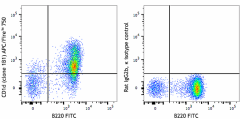
-

C57BL/6 mouse splenocytes were stained with B220 FITC and CD1d APC/Fire™ 750 (clone 1B1, left) or Rat IgG2b, κ isotype control APC/Fire™ 750 (right).
| Cat # | Size | Price | Quantity Check Availability | Save | ||
|---|---|---|---|---|---|---|
| 123525 | 25 µg | 100€ | ||||
| 123526 | 100 µg | 272€ | ||||
CD1d, known as CD1.1 and Ly-38, is a 48 kD type I membrane glycoprotein with structural similarities to MHC class I and is non-covalently associated with β2-microglobulin. In humans, CD1 family consists of group I proteins (CD1a, CD1b, and CD1c), group II (CD1d), and group III (CD1e). But CD1d is the only CD1 molecule has been found in mouse. Mouse CD1d has broad tissue distribution, and is found on leukocytes, dendritic cells, epithelial cells, and thymocytes. CD1d plays a role in non-peptide glycolipid antigen presentation to CD1d-restricted T cells. It has been shown that PKCδ is a critical regulator of CD1d-mediated antigen presentation.
Product DetailsProduct Details
- Verified Reactivity
- Mouse
- Antibody Type
- Monoclonal
- Host Species
- Rat
- Immunogen
- Mouse Cd1.1 cDNA-transfected RMA-S mouse T lymphoma
- Formulation
- Phosphate-buffered solution, pH 7.2, containing 0.09% sodium azide.
- Preparation
- The antibody was purified by affinity chromatography and conjugated with APC/Fire™ 750 under optimal conditions.
- Concentration
- 0.2 mg/ml
- Storage & Handling
- The antibody solution should be stored undiluted between 2°C and 8°C, and protected from prolonged exposure to light. Do not freeze.
- Application
-
FC - Quality tested
- Recommended Usage
-
Each lot of this antibody is quality control tested by immunofluorescent staining with flow cytometric analysis. For flow cytometric staining, the suggested use of this reagent is ≤ 0.25 µg per million cells in 100 µL volume. It is recommended that the reagent be titrated for optimal performance for each application.
* APC/Fire™ 750 has a maximum excitation of 650 nm and a maximum emission of 774 nm. - Excitation Laser
-
Red Laser (633 nm)
- Application Notes
-
Additional reported applications (for the relevant formats) include: immunoprecipitation, immunohistochemistical staining, and blocking function3.
This product is for research use only and is not to be used for commercial purposes. Use of this product to produce products for sale or for diagnostic, therapeutic or drug discovery purposes is prohibited. In order to obtain a license to use this product for commercial purposes, contact the Regents of the University of California.
- Application References
-
- Fischer K, et al. 2004. P. Natl. Acad. Sci. USA 101:10685. (Block)
- Brozovic S, et al. 2004. Nat. Med. 10:535.
- Brossay L, et al. 1997. J. Immunol.. 159:1216. (Block)
- Jiang J, et al. 2012. PLoS One. 7:47487. PubMed
- Product Citations
-
- RRID
-
AB_2783067 (BioLegend Cat. No. 123525)
AB_2783068 (BioLegend Cat. No. 123526)
Antigen Details
- Structure
- 48 kD glycoprotein, Ig superfamily
- Distribution
-
leukocytes, dendritic cells, epithelial cells, thymocytes
- Function
- Antigen presentation
- Ligand/Receptor
- similar to MHC class I, associate with ß-microglobulin
- Cell Type
- Dendritic cells, Epithelial cells, Leukocytes, Thymocytes
- Biology Area
- Immunology, Innate Immunity
- Molecular Family
- Adhesion Molecules, CD Molecules
- Antigen References
-
1. Brudin N, et al. 1998. J. Immunol. 161:3271.
2. Amano M, et al. 1998. J. Immunol. 161:1710.
3. Brossay L, et al. 1997. J. Immunol. 159:1216.
4. Dougan SK, et al. 2007. Curr. Top. Microbiol. Immunol. 314:113.
5. Brutkiewicz RR, et al. 2007. Eur. J. Immunol. 37:2390. - Gene ID
- 12479 View all products for this Gene ID
- UniProt
- View information about CD1d on UniProt.org
Related FAQs
Other Formats
View All CD1d Reagents Request Custom Conjugation| Description | Clone | Applications |
|---|---|---|
| Purified anti-mouse CD1d (CD1.1, Ly-38) | 1B1 | FC,IHC,IP |
| Biotin anti-mouse CD1d (CD1.1, Ly-38) | 1B1 | FC,IHC |
| FITC anti-mouse CD1d (CD1.1, Ly-38) | 1B1 | FC |
| PE anti-mouse CD1d (CD1.1, Ly-38) | 1B1 | FC |
| Alexa Fluor® 647 anti-mouse CD1d (CD1.1, Ly-38) | 1B1 | FC |
| PerCP/Cyanine5.5 anti-mouse CD1d (CD1.1, Ly-38) | 1B1 | FC |
| Pacific Blue™ anti-mouse CD1d (CD1.1, Ly-38) | 1B1 | FC |
| PE/Dazzle™ 594 anti-mouse CD1d (CD1.1, Ly-38) | 1B1 | FC |
| APC anti-mouse CD1d (CD1.1, Ly-38) | 1B1 | FC |
| PE/Cyanine7 anti-mouse CD1d (CD1.1, Ly-38) | 1B1 | FC |
| APC/Fire™ 750 anti-mouse CD1d (CD1.1, Ly-38) | 1B1 | FC |
| Brilliant Violet 421™ anti-mouse CD1d (CD1.1, Ly-38) | 1B1 | FC |
| TotalSeq™-A0851 anti-mouse CD1d (CD1.1, Ly-38) | 1B1 | PG |
| Ultra-LEAF™ Purified anti-mouse CD1d (CD1.1, Ly-38) | 1B1 | FC,Block,IHC,IP |
| TotalSeq™-C0851 anti-mouse CD1d (CD1.1, Ly-38) | 1B1 | PG |
| TotalSeq™-B0851 anti-mouse CD1d (CD1.1, Ly-38) | 1B1 | PG |
Customers Also Purchased
Compare Data Across All Formats
This data display is provided for general comparisons between formats.
Your actual data may vary due to variations in samples, target cells, instruments and their settings, staining conditions, and other factors.
If you need assistance with selecting the best format contact our expert technical support team.
-
Purified anti-mouse CD1d (CD1.1, Ly-38)
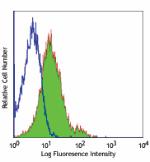
C57BL/6 mouse splenocytes stained with purified 1B1, followe... -
Biotin anti-mouse CD1d (CD1.1, Ly-38)
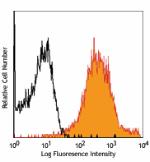
C57BL/6 mouse splenocytes stained with biotinylated 1B1, fol... -
FITC anti-mouse CD1d (CD1.1, Ly-38)

C57BL/6 splenocytes stained with 1B1 FITC -
PE anti-mouse CD1d (CD1.1, Ly-38)

C57BL/6 splenocytes stained with 1B1 PE -
Alexa Fluor® 647 anti-mouse CD1d (CD1.1, Ly-38)

C57BL/6 splenocytes stained with 1B1 Alexa Fluor® 647 -
PerCP/Cyanine5.5 anti-mouse CD1d (CD1.1, Ly-38)
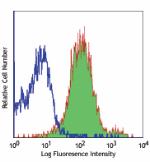
C57BL/6 mouse splenocytes stained with 1B1 PerCP/Cyanine5.5 -
Pacific Blue™ anti-mouse CD1d (CD1.1, Ly-38)
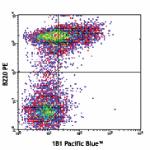
C57/B6 mouse splenocytes were stained with CD1d (clone 1B1) ... 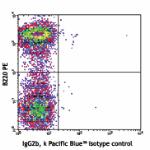
-
PE/Dazzle™ 594 anti-mouse CD1d (CD1.1, Ly-38)

C57BL/6 mouse splenocytes were stained with CD1d PE/Dazzle™ ... -
APC anti-mouse CD1d (CD1.1, Ly-38)

C57BL/6 mouse splenocytes were stained with CD1d APC (clone ... -
PE/Cyanine7 anti-mouse CD1d (CD1.1, Ly-38)
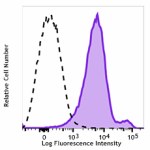
C57BL/6 mouse splenocytes were stained with CD1d PE/Cyanine7... -
APC/Fire™ 750 anti-mouse CD1d (CD1.1, Ly-38)

C57BL/6 mouse splenocytes were stained with B220 FITC and CD... -
Brilliant Violet 421™ anti-mouse CD1d (CD1.1, Ly-38)

C57BL/6 mouse splenocytes were stained with CD45R/B220 APC a... -
TotalSeq™-A0851 anti-mouse CD1d (CD1.1, Ly-38)
-
Ultra-LEAF™ Purified anti-mouse CD1d (CD1.1, Ly-38)

C57BL/6 mouse splenocytes stained with Ultra-LEAF™ Purified ... -
TotalSeq™-C0851 anti-mouse CD1d (CD1.1, Ly-38)
-
TotalSeq™-B0851 anti-mouse CD1d (CD1.1, Ly-38)
 Login / Register
Login / Register 











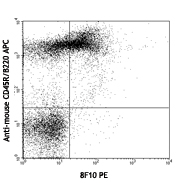


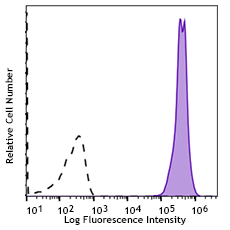



Follow Us